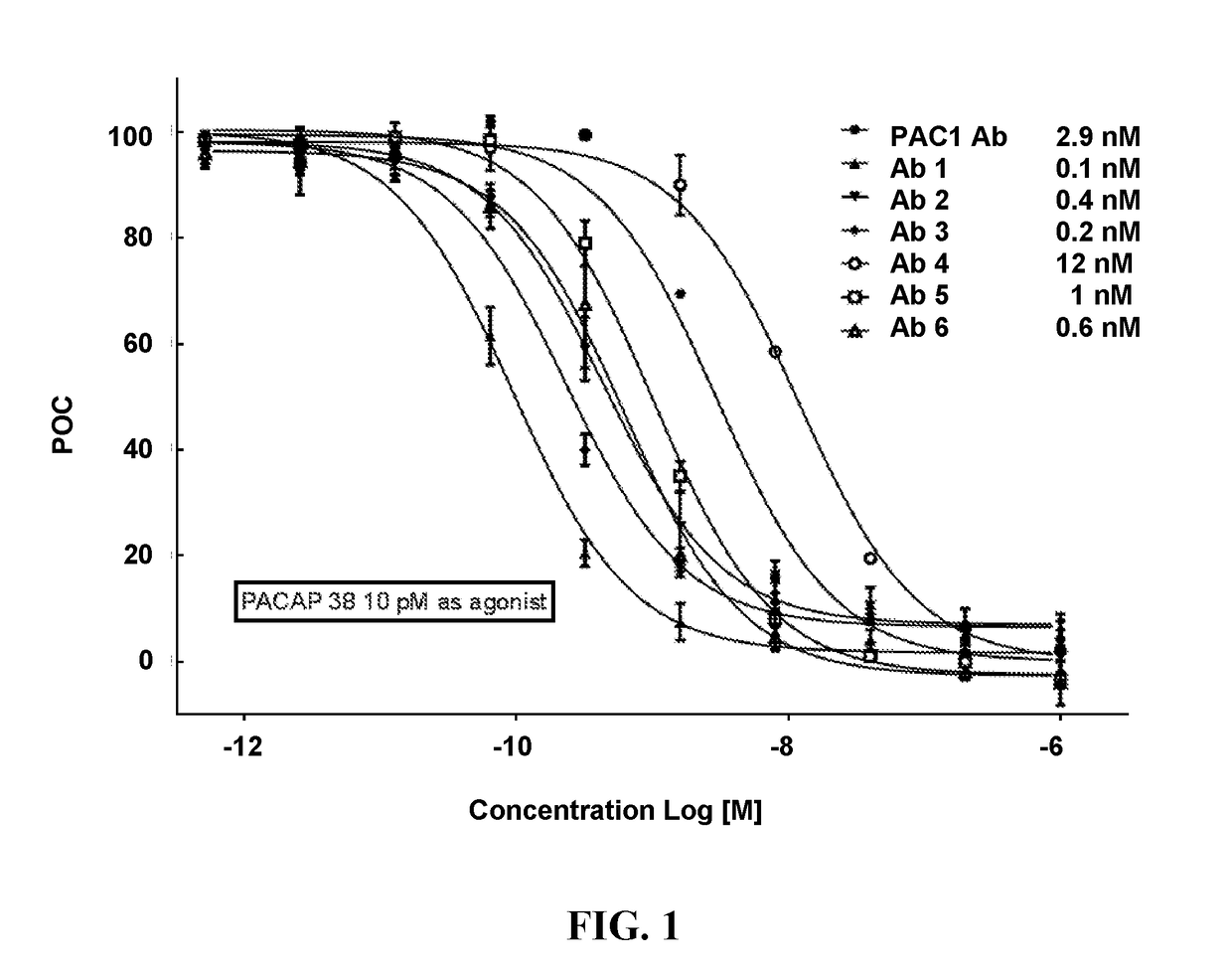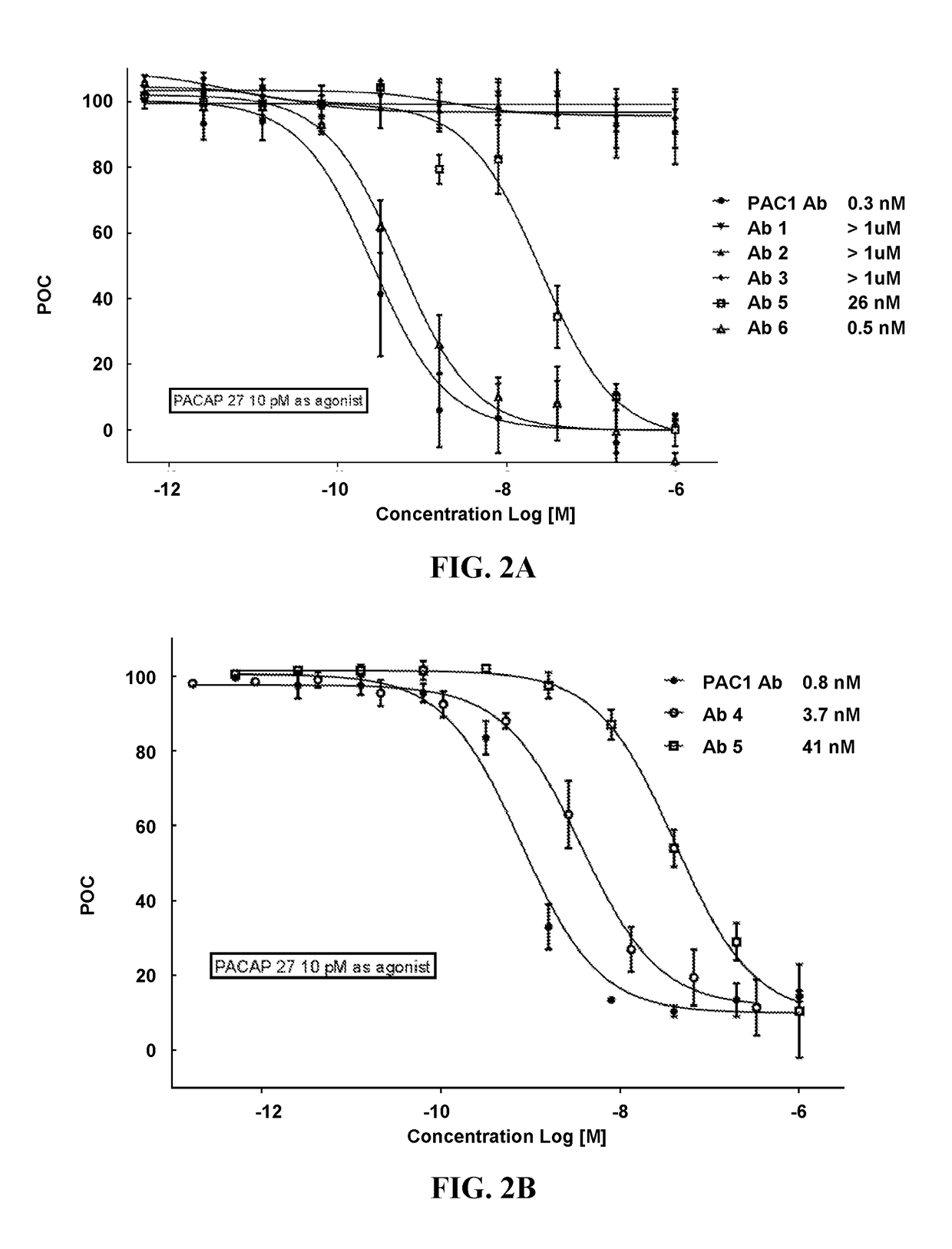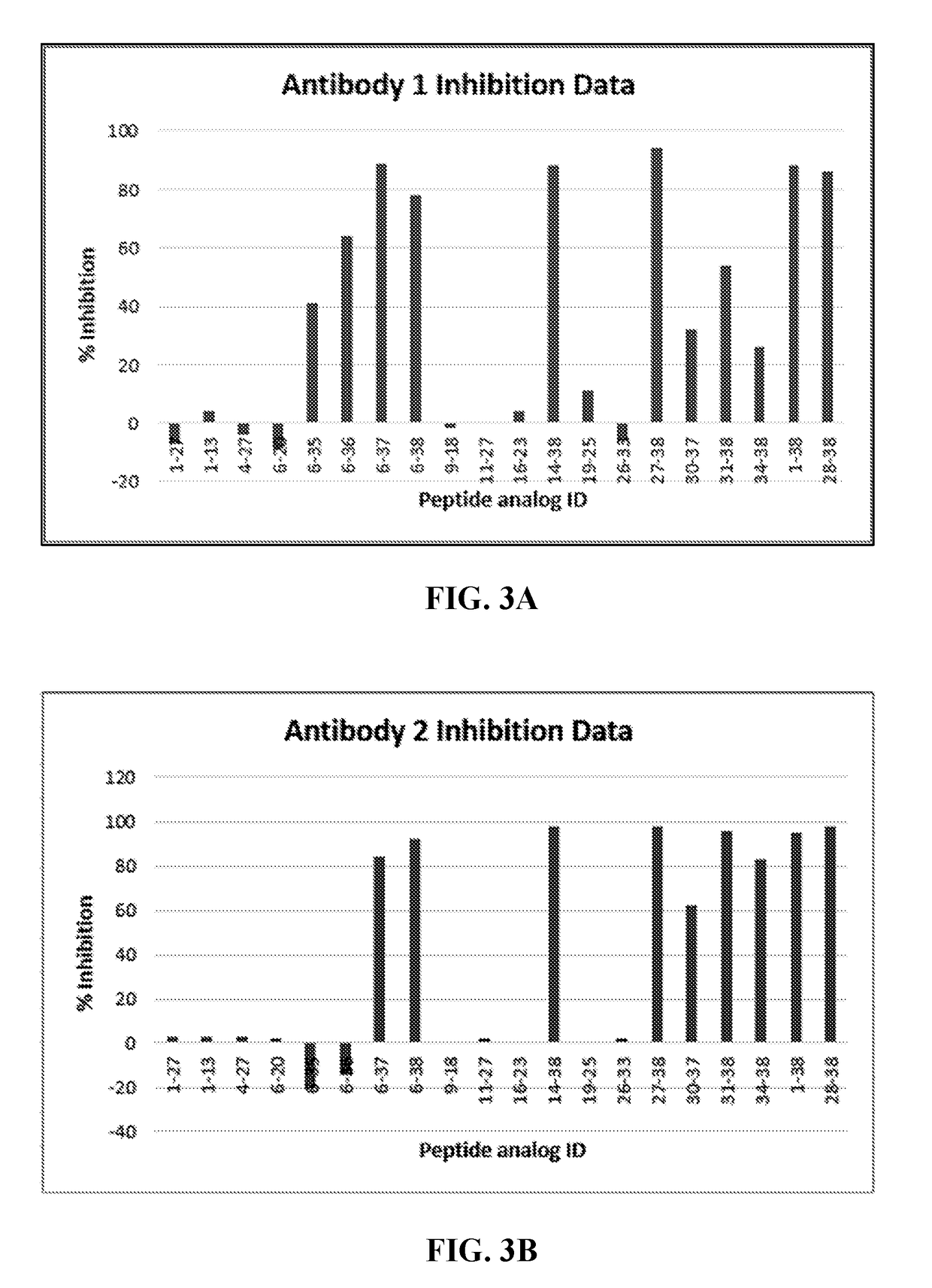Pacap antibodies and uses thereof
- Summary
- Abstract
- Description
- Claims
- Application Information
AI Technical Summary
Benefits of technology
Problems solved by technology
Method used
Image
Examples
example 1
n of Anti-PACAP Antibodies
[0185]Rabbits were immunized with human PACAP38 peptide (HSDGIFTDSYSRYRKQMAVKKYLAAVLGKRYKQRVKNK; SEQ ID NO: 1). Monoclonal antibodies were generated from the immunized rabbits using the Selected Lymphocyte Antibody Method (SLAM) as described in Babcook et al., Proc. Natl. Acad. Sci. USA, Vol. 93: 7843-7848, 1996. Briefly, B cells were harvested from spleens from the immunized rabbits and expanded in culture. The supernatant from the expanded B-cell cultures was initially screened for binding to an amino terminal PACAP38 peptide (HSDGIFTDSYSRY; SEQ ID NO: 5) and a carboxy terminal PACAP38 peptide (GKRYKQRVKNK; SEQ ID NO: 4) using an ELISA assay. From the initial screen, 2,935 N-terminal and / or C-terminal binders were identified. The affinity of these antibodies for full-length human PACAP38 (SEQ ID NO: 1) was assessed by ELISA assay. The top 53 antibodies with the highest affinity to full-length human PACAP38 and that bound only the N-terminal peptide or the...
example 2
ing Activity of Anti-PACAP Monoclonal Antibodies
[0187]The recombinantly-produced, purified monoclonal antibodies (mAbs) were evaluated for binding to full-length human PACAP38 (SEQ ID NO: 1) and its isoform PACAP27 (HSDGIFTDSYSRYRKQMAVKKYLAAVL; SEQ ID NO: 2) using an ELISA assay. The ELISA assay used unlabeled mAbs 1 to 6 as capture reagents at the concentration of 13 nM. Analyte PACAP38 (SEQ ID NO: 1) and its isoform PACAP27 (SEQ ID NO: 2) were evaluated at two concentration levels (6.6 and 657 pM for PACAP38; 9.5 and 956 pM for PACAP27). Biotinylated mAbs 1 to 6 at the concentration of 5 nM were the secondary assay reagents. Neutravidin Horseradish Peroxidase (HRP) reacted with the biotinylated mAbs and produced colorimetric signals, optical density, in the presence of 3,3′,5,5′-Tetramethylbenzidine (TMB) substrate solution. The intensity of optical density corresponded to the analyte concentration. The results of this assay revealed that mAb1, mAb2, and mAb3 bound to PACAP38, but...
example 3
apping of Anti-PACAP Antibodies
[0193]The binding epitopes of anti-PACAP antibodies were evaluated by using the Biacore 3000 biosensor-based instrument (GE Healthcare USA). The Biacore 3000 instrument utilizes surface plasmon resonance (SPR) technology to measure mass increase on the sensor-chip surface. The binding interactions are measured in real-time and recorded as Response Units (RU). Each binding profile (cycle) is stored in a “sensorgram” in real-time. Generally, Biacore technology entails immobilizing a ligand of interest on to a flow-cell of the sensor-chip via a coupling chemistry. The analyte (e.g. putative binding partner to the ligand of interest) is injected across the immobilized ligand allowing it to bind to the ligand-immobilized surface. The magnitude of the response is directly proportional to the mass increase on the immobilized surface due to the binding of the analyte.
[0194]In this experiment, various peptide fragments of PACAP38 were incubated with each of the...
PUM
| Property | Measurement | Unit |
|---|---|---|
| Fraction | aaaaa | aaaaa |
| Fraction | aaaaa | aaaaa |
| Vickers hardness | aaaaa | aaaaa |
Abstract
Description
Claims
Application Information
 Login to View More
Login to View More - R&D
- Intellectual Property
- Life Sciences
- Materials
- Tech Scout
- Unparalleled Data Quality
- Higher Quality Content
- 60% Fewer Hallucinations
Browse by: Latest US Patents, China's latest patents, Technical Efficacy Thesaurus, Application Domain, Technology Topic, Popular Technical Reports.
© 2025 PatSnap. All rights reserved.Legal|Privacy policy|Modern Slavery Act Transparency Statement|Sitemap|About US| Contact US: help@patsnap.com



